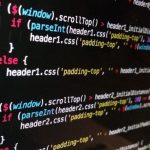Increasing complexity in digital threats places heavier demands on security teams, pushing organizations to search for technology that not only detects threats but also streamlines operational processes. Google Cloud’s newest announcements at Security Summit 2025 bring forward a digital framework where artificial intelligence (AI) is designed to migrate human analysts from repetitive tasks to strategic roles. By integrating its AI-driven solutions deeper into its security offerings, Google Cloud positions itself as a facilitator of safer business operations. The introduction of the Alert Investigation agent and the enhanced AI Protection in Security Command Center represent proactive steps to manage and secure both AI assets and traditional infrastructure. Unlike conventional security upgrades, these features specifically address the rise of agent-based AI, which complicates the current threat landscape. Growing AI agent adoption by businesses signals a pivotal moment in cybersecurity management strategies.
Earlier reports highlighted AI’s potential role in security innovation, yet real-world applications were less concrete than those demonstrated at the Security Summit 2025. Previously, Google Cloud detailed broad AI ambitions, focusing primarily on detection tools. The current strategy brings a more operationally integrated AI presence and emphasizes agent-based defenses, real-time threat mitigation through tools like Model Armor, and broader coverage for data and network security. These directions mark a departure from earlier prototypes, suggesting a matured outlook and direct response mechanisms lacking in previous offerings. Compared with similar moves from industry competitors, Google Cloud’s attention to internal AI security posture and automated ecosystem discovery sets its approach apart.
How Does Google Cloud Protect the AI Ecosystem?
Within the Security Command Center, Google Cloud’s advanced AI Protection measures are set to be expanded. Upcoming features—now in preview—allow for automatic detection and mapping of all AI agents and servers, providing teams with comprehensive visibility. This approach supports identification of vulnerabilities and aids in tracking intersection points where security lapses may occur. Furthermore, with Model Armor now working in-line across prompts and responses in Agentspace, potential risks like prompt injection or sensitive data leakage can be mitigated more promptly than before.
What Changes Occur in Security Operations Centers?
The company introduces a blueprint for an “agentic SOC,” emphasizing the direct involvement of AI in daily security operations. The Alert Investigation agent functions as an automated specialist, handling repetitive investigations, analyzing command-line activity, and summarizing findings. According to Google Cloud,
“AI can handle many of the manual, repetitive tasks in security operations, freeing up analysts for higher-value work.”
This not only streamlines case resolutions but also shortens response times, aligning security resources more efficiently with emerging threats.
Which Tools Reinforce Cloud Security Posture?
Key enhancements across Google Security Operations include the general availability of integrated SOAR dashboards and the introduction of SecOps Labs for early access to Gemini AI-powered capabilities. Compliance Manager and Risk Reports offer a structured way to assess weaknesses by leveraging virtual red team scenarios, while Sensitive Data Protection now extends coverage to platforms such as Vertex AI. Expanding on access management, the IAM role picker, powered by Gemini, matches permissions with specified tasks, and automated re-authentication secures critical activities. The adoption of Zero Trust principles in Cloud NGFW broadens protection for advanced computing environments. Google notes,
“Embedding AI into our cloud security offerings supports defenders as they navigate increasingly complex challenges.”
The integration of AI at every layer of Google Cloud’s security stack marks a shift from merely deploying new technologies to building automated, collaborative defenses. While alternatives from other providers center on AI-assisted lists and detection engines, Google’s intensifying focus on agentic workflows, posture management, and integrated orchestration platforms sets a distinct trajectory. These changes urge organizations to not only evaluate their current cloud security environment, but to also plan for governance over their growing internal AI populations. For enterprise IT and security leaders, leveraging tools such as SOAR dashboards, model-intrinsic protections, and adaptive role management can offer measurable benefits when facing advanced persistent threats or compliance audits. As AI becomes more embedded in operational and decision-making layers, keeping up with vendor-specific enhancements helps organizations remain resilient against escalating digital risks.










